当前位置:网站首页>Comics: looking for the best time to buy and sell stocks
Comics: looking for the best time to buy and sell stocks
2020-11-08 13:02:00 【I'm sorry.】
Some time ago , Xiaohui released the next two on the stock trading algorithm problem explanation , It has inspired a lot of interest from small partners .
This time, , Xiao Hui integrates these two comics together , And fixed some of the details of the error , Thank you for your advice .


————— the second day —————






What does that mean ? Let's take an example , Given the following array :

The corresponding stock up and down curve of this array is as follows :
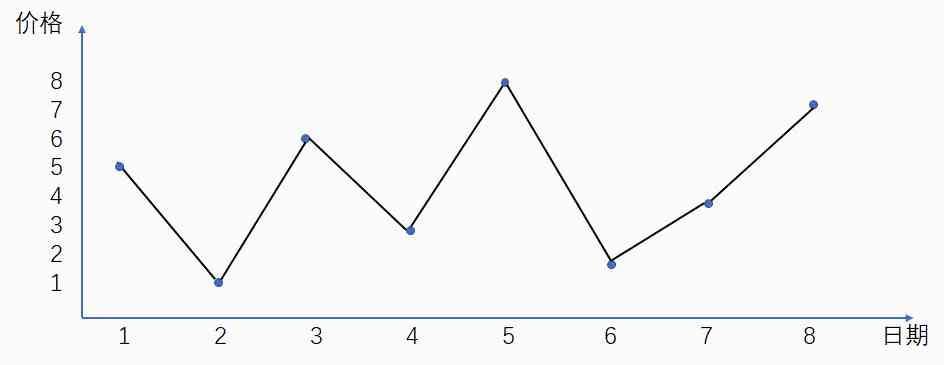
obviously , From 2 The price is 1 Buy when , From 5 The price is 8 Sell when , You can get the most out of it :
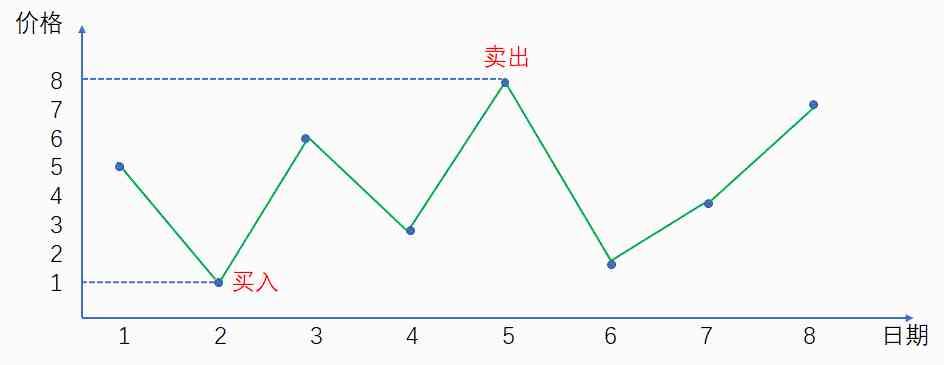
The biggest payoff at this point is 8-1=7.





In the example above , Maximum 9 At the minimum 1 In front of , How can we trade ? We can't turn back time ?


————————————





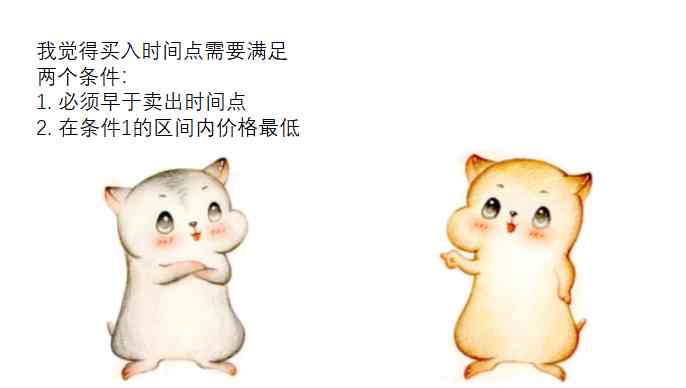
The following is an example , If we have set the price 4 It's time to sell , So which is the best time to buy ?
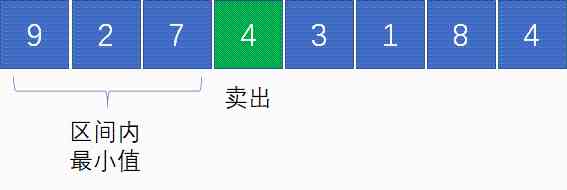
We have to choose the price 4 The previous interval , And must be the minimum value in the interval , obviously , The best choice is price 2 The timing of the .


The first 1 Step , Initialization operation , Put the first 1 Elements as temporary minimum price ; The initial value of maximum return is 0:

The first 2 Step , Traverse to the 2 Elements , because 2<9, So the current minimum price becomes 2; There is no need to calculate the difference ( Because the front element is bigger than it ), The biggest benefit is still 0:

The first 3 Step , Traverse to the 3 Elements , because 7>2, So the current minimum price is still 2; As we said just now , Suppose the price 7 For selling point , The best buy point for that is the price 2, The difference between the two 7-2=5,5>0, So the biggest payoff right now is 5:

The first 4 Step , Traverse to the 4 Elements , because 4>2, So the current minimum price is still 2;4-2=2,2<5, So the biggest payoff is still 5:

The first 5 Step , Traverse to the 5 Elements , because 3>2, So the current minimum price is still 2;3-2=1,1<5, So the biggest payoff is still 5:

And so on , We walk through the end of the array , The minimum price at this time is 1; The biggest benefit is 8-1=7:



public class StockProfit {
public static int maxProfitFor1Time(int prices[]) {
if(prices==null || prices.length==0) {
return 0;
}
int minPrice = prices[0];
int maxProfit = 0;
for (int i = 1; i < prices.length; i++) {
if (prices[i] < minPrice) {
minPrice = prices[i];
} else if(prices[i] - minPrice > maxProfit){
maxProfit = prices[i] - minPrice;
}
}
return maxProfit;
}
public static void main(String[] args) {
int[] prices = {9,2,7,4,3,1,8,4};
System.out.println(maxProfitFor1Time(prices));
}
}





Let's take the array in the following figure for example , Take a visual look at the timing of buying and selling :
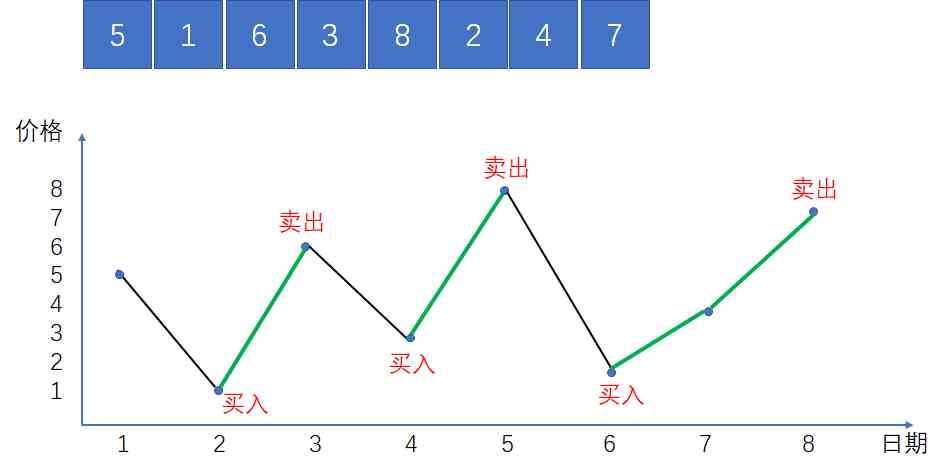
In the picture , The green line represents the stage of price rise . Since there is no limit to the number of transactions , So we can buy at every low point , Sell at every high .
thus , All the green parts are our gains , The maximum total return is the sum of these local returns :
(6-1)+(8-3)+(4-2)+(7-4) = 15
As for how to judge these green rising stages ? It's simple , We traverse the entire array , But where the latter is greater than the former , It means that the stock price is in the rising stage .

public int maxProfitForAnyTime(int[] prices) {
int maxProfit = 0;
for (int i = 1; i < prices.length; i++) {
if (prices[i] > prices[i-1])
maxProfit += prices[i] - prices[i-1];
}
return maxProfit;
}





Let's still take the previous array as an example :

First , Look for 1 The best buy and sell point under the sub limit :

It's impossible to cross the two positions , So we found number one 1 After the second trading position , Take out this pair of buy and sell points and the elements in between :

Next , We follow the same line of thinking , And then look for the rest of the elements 2 The best buy and sell point for sub - Sales :

thus , We found the most 2 The best choice in the case of sub sales :






For the array above , If we solve it twice independently , The best buy and sell points are 【1,9】 and 【6,7】, The biggest benefit is (9-1)+(7-6)=9:

But actually , If you choose 【1,8】 and 【3,9】, The biggest benefit is (8-1)+(9-3)=13>9:




When the first 1 The next best buy and sell point is determined , The first 2 What kind of situation will there be in the position of buying and selling points ?
situation 1: The first 2 Second best buy and sell point , In the 1 Buy sell left

situation 2: The first 2 Second best buy and sell point , In the 1 On the right side of the buying and selling point

situation 3: The first 1 The buy and sell range is cut off from the middle , Split it back into two deals

that , How to judge what kind of situation a given stock price array belongs to ? It's simple , In the 1 After the next maximum buying and selling point is determined , We can compare which situation brings about the largest increase in revenue :

Looking for the biggest gains on the left and right is easy to understand , What's the use of looking for the biggest drop in the middle ?
Think about it and you'll know , When the first 1 When the sale needs to be split up , The biggest drop in the trading range , It's the same as the profit increment after the split ( Similar to the bottom of the stock market operation ):

thus , We can sum up the following formula :
Maximum total revenue = The first 1 The second largest return + Max( The biggest gain on the left , The biggest drop in the middle , The biggest gain on the right )


So called dynamic programming , It is to simplify a complex problem into smaller subproblems , And then from the simple subproblem from the bottom up step by step recursion , Finally, we get the optimal solution of complex problems .
First , Let's analyze the current stock trading problem , This problem requires a certain number of days to be solved 、 The maximum return under a certain number of transactions .
Since the limit on the maximum trading of shares 2 Time , Then the stock transaction can be divided into 5 Stages :
No business
The first 1 Buy... Times
The first 1 Time to sell
The first 2 Buy... Times
The first 2 Time to sell
We set the trading stage of a stock as a variable m( Use from 0 To 4 The value of represents ), Set the range of days as a variable n. And the biggest benefit of our solution is , Influenced by these two variables , It can be expressed as follows :
The biggest gain = F(n,m)(n>=1,0<=m<=4)
Since functions and variables have been determined , Next, we're going to identify two elements of dynamic planning :
1. The initial state of the problem
2. The state transition equation of the problem
What is the initial state of the problem ? We assume that the range of trading days is limited to 1 God , That is to say n=1 The situation of :

1. If there is no business , That is to say m=0 when , The biggest benefit is obviously 0, That is to say F(1,0)= 0
2. If there is 1 Buy... Times , That is to say m=1 when , It's equivalent to subtracting the first one out of thin air 1 Day's share price , The biggest profit is negative day stock price , That is to say F(1,1)= -price[0]
3. If there is 1 Time to buy , That is to say m=2 when , The sale offsets ( Of course , It doesn't make sense ), The biggest benefit is 0, That is to say F(1,2)= 0
4. If there is 2 Buy... Times , That is to say m=3 when , Same as m=1 The situation of ,F(1,3)= -price[0]
5. If there is 2 Time to sell , That is to say m=4 when , Same as m=2 The situation of ,F(1,4)= 0
The initial state is determined , Let's take a look at the state shift . If the range of days is limited from n-1 Days increased to n God , So what happens to the maximum return ?

It depends on what stage is it now ( It's the number of buying and selling ), And for the first time n Day stock price operation ( purchase 、 Sell or wait and see ). Let's analyze the situation at each stage :
1. If there was no sale before , And the first n The sky is still watching , So the biggest payoff is still 0, namely F(n,0) = 0
2. If there was no sale before , And the first n Days to buy , So the biggest return is the negative day stock price , namely F(n,1)= -price[n-1]
3. If there was 1 Buy... Times , And the first n God chooses to wait and see , So the maximum profit is the same as before , namely F(n,1)= F(n-1,1)
4. If there was 1 Buy... Times , And the first n Days to sell , So the biggest payoff is 1 The negative return on the second purchase plus the share price of the day , That is to say F(n,2)= F(n-1,1)+ price[n-1]
5. If there was 1 Time to sell , And the first n God chooses to wait and see , So the maximum profit is the same as before , namely F(n,2)= F(n-1,2)
6. If there was 1 Time to sell , And the first n Days go on 2 Buy... Times , So the biggest payoff is 1 The second sale income minus the share price of the day , namely F(n,3)= F(n-1,2) - price[n-1]
7. If there was 2 Buy... Times , And the first n God chooses to wait and see , So the maximum profit is the same as before , namely F(n,3)= F(n-1,3)
8. If there was 2 Buy... Times , And the first n Days to sell , So the biggest payoff is 2 The second buy income minus the share price of the day , namely F(n,4)= F(n-1,3) + price[n-1]
9. If there was 2 Time to sell , And the first n God chooses to wait and see ( I can only wait and see ), So the maximum profit is the same as before , namely F(n,4)= F(n-1,4)
Last , We put the situation 【2,3】,【4,5】,【6、7】,【8,9】 Merge , It can be summed up as follows 5 An equation :
F(n,0) = 0
F(n,1)= max(-price[n-1],F(n-1,1))
F(n,2)= max(F(n-1,1)+ price[n-1],F(n-1,2))
F(n,3)= max(F(n-1,2)- price[n-1],F(n-1,3))
F(n,4)= max(F(n-1,3)+ price[n-1],F(n-1,4))
From the back 4 In the equation , We can sum up the relationship between the maximum return of each stage and the previous stage :
F(n,m) = max(F(n-1,m-1)+ price[n-1],F(n-1,m))
From this we can conclude that , The complete state transition equation is as follows :





In the table , Different lines represent the maximum return under different day limits , The different columns represent the maximum returns at different stages of trading .
We still use the array from the previous example , Fill in the table on this basis :

First , We fill in the initial state for the table :

Next , We're starting to fill in the 2 Row data .
When there is no business , The maximum benefit must be 0, therefore F(2,0) The result is 0:

According to the previous state transition equation ,F(2,1)= max(F(1,0)-2,F(1,1))= max(-2,-1)= -1, So the first 2 Xing di 2 The result of the column is -1:

F(2,2)= max(F(1,1)+2,F(1,2))= max(1,0)= 1, So the first 2 Xing di 3 The result of the column is 1:

F(2,3)= max(F(1,2)-2,F(1,3))= max(-2,-1)= -1, So the first 2 Xing di 4 The result of the column is -1:

F(2,4)= max(F(1,3)+2,F(1,4))= max(1,0)= 1, So the first 2 Xing di 5 The result of the column is 1:

And then we go on with the state transition equation , Fill first 3 Row data :

Next, fill in the 4 That's ok :

And so on , We've been filling in the entire form :

As shown in the figure , The last data in the table 13, It's the biggest benefit of the whole .


// The maximum number of transactions
private static int MAX_DEAL_TIMES = 2;
public static int maxProfitFor2Time(int[] prices) {
if(prices==null || prices.length==0) {
return 0;
}
// The maximum number of rows in a table
int n = prices.length;
// The maximum number of columns in a table
int m = MAX_DEAL_TIMES*2+1;
// Record data using a two-dimensional array
int[][] resultTable = new int[n][m];
// Fill in the initial state
resultTable[0][1] = -prices[0];
resultTable[0][3] = -prices[0];
// Bottom up , Fill in the data
for(int i=1;i<n;++i) {
for(int j=1;j<m;j++){
if((j&1) == 1){
resultTable[i][j] = Math.max(resultTable[i-1][j], resultTable[i-1][j-1]-prices[i]);
}else {
resultTable[i][j] = Math.max(resultTable[i-1][j], resultTable[i-1][j-1]+prices[i]);
}
}
}
// Return the final result
return resultTable[n-1][m-1];
}









// The maximum number of transactions
private static int MAX_DEAL_TIMES = 2;
public static int maxProfitFor2TimeV2(int[] prices) {
if(prices==null || prices.length==0) {
return 0;
}
// The maximum number of rows in a table
int n = prices.length;
// The maximum number of columns in a table
int m = MAX_DEAL_TIMES*2+1;
// Record data using a one-dimensional array
int[] resultTable = new int[m];
// Fill in the initial state
resultTable[1] = -prices[0];
resultTable[3] = -prices[0];
// Bottom up , Fill in the data
for(int i=1;i<n;++i) {
for(int j=1;j<m;j++){
if((j&1) == 1){
resultTable[j] = Math.max(resultTable[j], resultTable[j-1]-prices[i]);
}else {
resultTable[j] = Math.max(resultTable[j], resultTable[j-1]+prices[i]);
}
}
}
// Return the final result
return resultTable[m-1];
}
In this code ,resultTable From a two-dimensional array to a one-dimensional array . Because the maximum number of transactions is constant , So the spatial complexity of the algorithm also varies from O(n) Down to O(1).



public static int maxProfitForKTime(int[] prices, int k) {
if(prices==null || prices.length==0 || k<=0) {
return 0;
}
// The maximum number of rows in a table
int n = prices.length;
// The maximum number of columns in a table
int m = k*2+1;
// Record data using a one-dimensional array
int[] resultTable = new int[m];
// Fill in the initial state
for(int i=1;i<m;i+=2) {
resultTable[i] = -prices[0];
}
// Bottom up , Fill in the data
for(int i=1;i<n;i++) {
for(int j=1;j<m;j++){
if((j&1) == 1){
resultTable[j] = Math.max(resultTable[j], resultTable[j-1]-prices[i]);
}else {
resultTable[j] = Math.max(resultTable[j], resultTable[j-1]+prices[i]);
}
}
}
// Return the final result
return resultTable[m-1];
}

—————END—————
Friends who like this article , Welcome to the official account Programmer Xiaohui , Watch more

Order one [ Looking at ], It's the biggest support for Xiao Hui !
版权声明
本文为[I'm sorry.]所创,转载请带上原文链接,感谢
边栏推荐
- Written interview questions: find the smallest positive integer missing
- 优化if-else代码的八种方案
- Analysis of istio access control
- Istio流量管理--Ingress Gateway
- Top 5 Chinese cloud manufacturers in 2018: Alibaba cloud, Tencent cloud, AWS, telecom, Unicom
- 11 server monitoring tools commonly used by operation and maintenance personnel
- 阿里教你深入浅出玩转物联网平台!(附网盘链接)
- Top 5 Chinese cloud manufacturers in 2018: Alibaba cloud, Tencent cloud, AWS, telecom, Unicom
- 谷歌开源能翻译101种语言的AI模型,只比Facebook多一种
- 2035我们将建成这样的国家
猜你喜欢

Win10 Terminal + WSL 2 安装配置指南,精致开发体验

Python基础语法

软件开发中如何与人协作? | 每日趣闻

华为在5G手机市场占据绝对优势,市调机构对小米的市占出现分歧

啥是数据库范式

优化if-else代码的八种方案

rabbitmq(一)-基础入门

Entry level! Teach you how to develop small programs without asking for help (with internet disk link)

Python basic syntax

This year's salary is 35W +! Why is the salary of Internet companies getting higher and higher?
随机推荐
笔试面试题目:求丢失的猪
wanxin finance
PMP考试通过心得分享
Adobe Lightroom / LR 2021 software installation package (with installation tutorial)
Why is Schnorr Signature known as the biggest technology update after bitcoin segwit
C语言I博客作业03
Windows10关机问题----只有“睡眠”、“更新并重启”、“更新并关机”,但是又不想更新,解决办法
入门级!教你小程序开发不求人(附网盘链接)
华为云重大变革:Cloud&AI 升至华为第四大 BG ,火力全开
一文剖析2020年最火十大物联网应用|IoT Analytics 年度重磅报告出炉!
阿里云视频云技术专家 LVS 演讲全文:《“云端一体”的智能媒体生产制作演进之路》
Share the experience of passing the PMP examination
Google's AI model, which can translate 101 languages, is only one more than Facebook
Top 5 Chinese cloud manufacturers in 2018: Alibaba cloud, Tencent cloud, AWS, telecom, Unicom
吐血整理!阿里巴巴 Android 开发手册!(附网盘链接)
Enabling education innovation and reconstruction with science and technology Huawei implements education informatization
[Python 1-6] Python tutorial 1 -- number
笔试面试题目:判断单链表是否有环
阿里出品!视觉计算开发者系列手册(附网盘链接)
数据库连接报错之IO异常(The Network Adapter could not establish the connection)